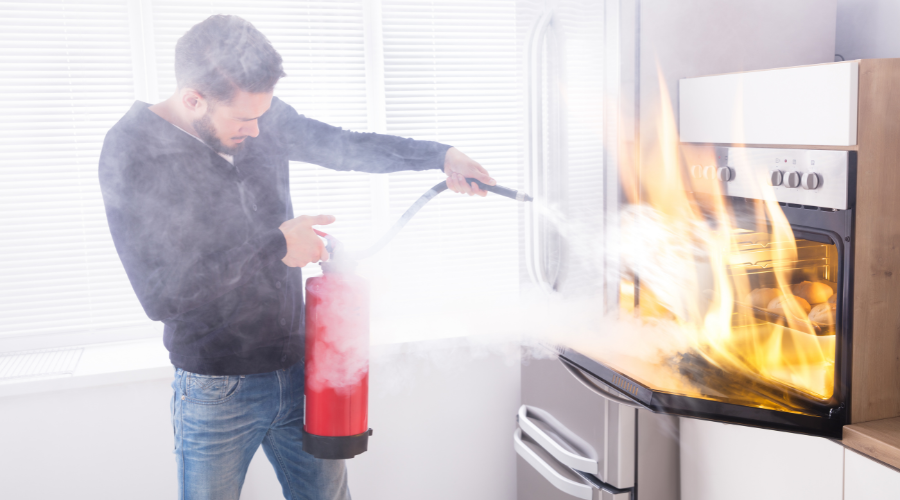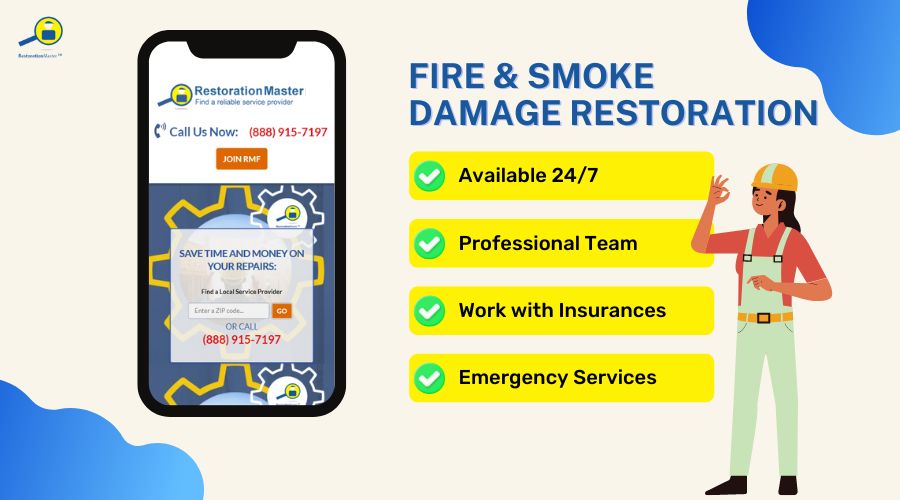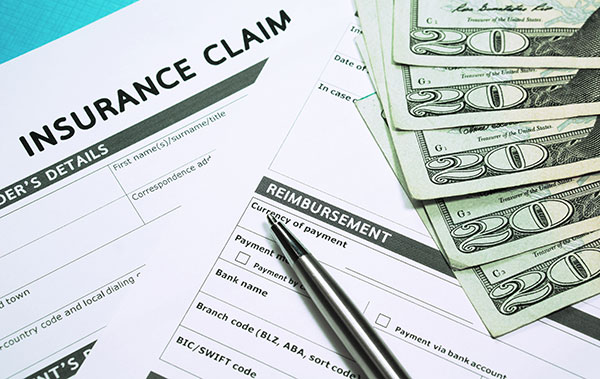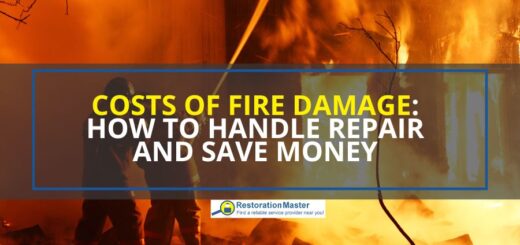What to Do After Inhaling Material From Fire Extinguisher
A small house fire may prompt the homeowner to grab a fire extinguisher to squash the flames. When used properly, a fire extinguisher poses little harm. But inhaling large quantities of the powder from the extinguisher can leadLead is a heavy metal that can be toxic to humans, especiall... More to a series of adverse health consequences.

What are the various types of fire extinguishers?
Fire extinguishers are made to put out fires. The fire extinguisher appropriate for a fire depends on the source of the flames. Water-based fire extinguishers, for example, release a spray of water and are designed to extinguish small fires produced by candles and cigarettes.
A water-based extinguisher is not recommended for grease fires, as the water can cause the fire to spread. However, a foam-based extinguisher is intended to put out fires on stovetops and outdoor grills. It works by spreading a thick layer of foam over the intended area.
Dry powder-based extinguishers are also on the market. This type of extinguisher squashes flames by releasing a combination of water and a dry powder—acting as, essentially, a hybrid extinguisher. The powder absorbs nearby moisture, which creates steam that puts out the fire.
Halon-based extinguishers are another option for suppressing fires. They use halon gas and carbon dioxide to extinguish out-of-control flames. The halon-based extinguisher works much like a dry powder-based version. The difference is that it does not absorb moisture from the air.
Why is inhaling materials from a fire extinguisher dangerous?
Fire extinguisher powder is generally non-toxic. However, inhaling large quantities could result in a wide range of health problems. The chemicals in a fire extinguisher include ammonium phosphate and/or ammonium sulfate. As mentioned, breathing in a small amount poses no harm.

What health problems arise upon inhaling the chemicals?
Breathing in large quantities of fire suppressant chemicals is dangerous. Mild symptoms, like nausea, vomiting, dizziness, and headaches, can develop. When symptoms are severe, the individual experiences shortness of breath, suffers chest pains or seizures, and may even lose consciousness. Breathing in the fumes emitted by a fire extinguisher sends chemicals into the lungs. The chemicals coat the insides of the lungs and irritate the respiratory tract. Damage to the heart is also possible when significant amounts of the materials are inhaled.
Life-threatening heart problems can develop after breathing in high concentrations of the noxious materials from a fire extinguisher. The extinguisher’s chemicals can potentially cause inflammation to the arteries and blood vessels, sometimes even clogging the arteries and causing a heart attack. Deliberately inhaling fire extinguisher materials causes severe symptoms, such as pneumonia and irregular heartbeat. Kidney failure develops when the inhaled chemicals travel through the bloodstream and to the kidneys. Prolonged exposure to the chemicals increases the individual’s risk of cancer.
What should a person do after inhaling fire extinguisher chemicals?
When symptoms of chemical inhalation are mild, such as shortness of breath, coughing, dizziness, and headaches, the remedy is to expose the individual to fresh air. Breathing in fresh, clean air helps to resolve symptoms quickly. Steam treatment, via a steam shower, likewise alleviates mild symptoms.
Breathing in chemical fumes from a fire extinguisher may cause more serious respiratory symptoms in vulnerable individuals, such as those diagnosed with asthma or other lung conditions. In these instances, it is vital that the person seek prompt medical attention. Along with inhaling the chemicals from a fire extinguisher, the individual using it may accidentally expose their skin or eyes to the materials. In these instances, immediately rinsing the affected areas for several minutes with water is advised as an initial treatment. Then call Poison Control.

What are tips for using a fire extinguisher safely?
Using a fire extinguisher for small fires is practical. When operating the device, adhere to safety guidelines. For example, hold the fire extinguisher with the nozzle pointing away from the body. This helps the user avoid directly inhaling the chemicals from the fire extinguisher.
Keep the back toward a clear entrance so that escape is within reach if the fire blazes out of control. Apply four steps when operating the fire extinguisher: pull, aim, squeeze, and sweep. The acronym to easily remember these potentially life-saving steps is P.A.S.S.
Uncontrollable fires should be put out by local fire officials to avoid risks to personal safety. Assess the fire to determine if it is too big to be extinguished by a fire extinguisher. If it is, evacuate the home and call 911 immediately from a safe location.
When the fire extinguisher is not in use, keep it stored in an accessible place, such as the kitchen or the garage. Mount the extinguisher on a wall for quick access in the case of a fire emergency. Ideally, fire extinguishers should be placed on every level of the home.
A home fire is a distressing event that leaves property destruction in its wake. Fire damage spreads long after the fire officials extinguish the flames. Soot and smoke etch surfaces and structural materials weaken in the aftermath of fire. Stop the spread of damage with the help of fire damage restorationFire damage restoration is the process of repairing and rest... More contractors.
Smoke and Fire Damage Restoration Services

Fire damage restoration technicians are prepared to return your home to its pre-loss condition as quickly as possible after a fire. The professionals at RestorationMaster will arrive promptly to assess the damage, formulate a cleanup plan, and begin the restorationRestoration is the process of returning a property to its pr... More process. The fire-damaged property is stabilized to prevent collapse. All sootSoot is fine black particles composed of carbon and other ma... More and smoke are cleaned using powerful cleaning solutions and high-tech equipment that are proven to be safe on even the most delicate surfaces.
Our professionals will follow with convenient content cleaning services, as well. A thorough deodorization follows to eliminate the foul smoke odors and return optimum air quality to the home. RestorationMaster’s skilled professionals also disinfect the area and provide reconstruction services to ensure all of your fire damage needs are met. If you are in need of smoke and fire damage restorationFire damage restoration is the process of repairing and rest... More, call RestorationMaster today. You can trust our professionals to have your home returned back to normal.












